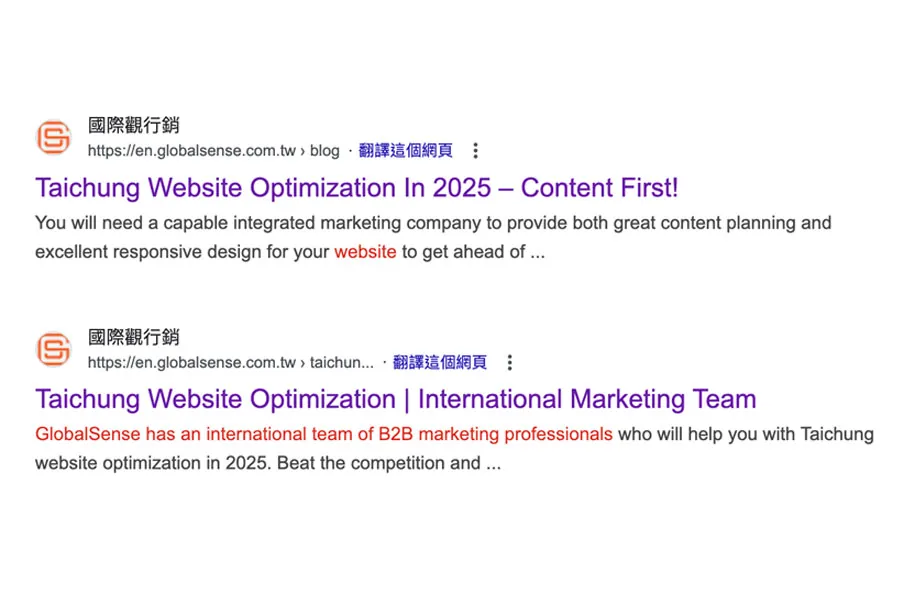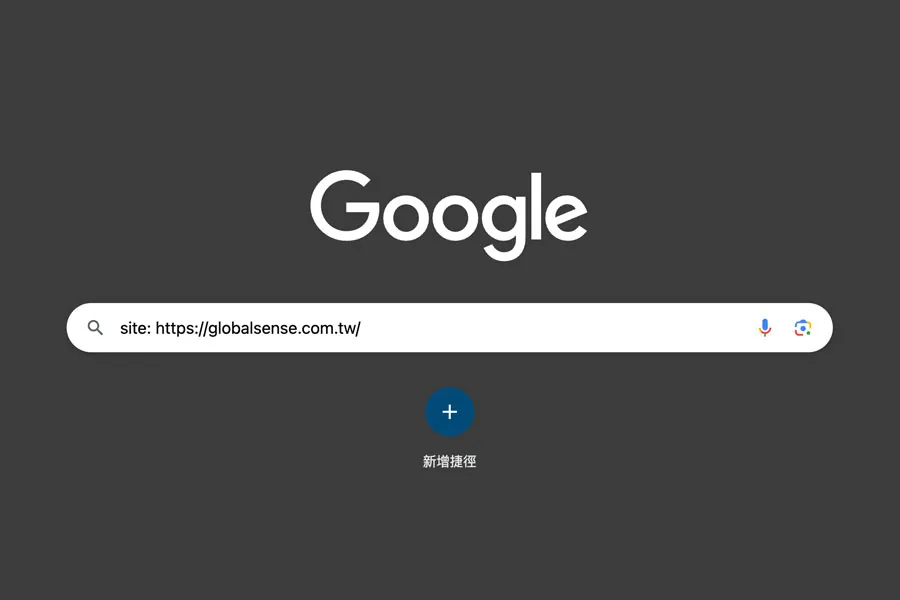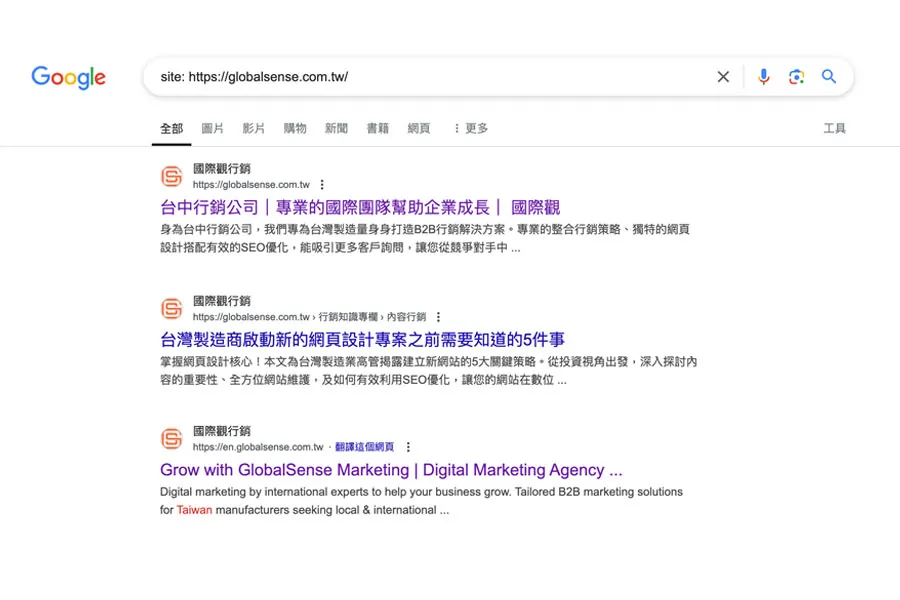In 2025, Website Design Isn’t Enough You Need a B2B Blog


Website design is not the first thing you should be searching for, your company B2B blog is more important than ever before. In this article I will show you the three things you need to get right with your blog to make sure that you can attract new customers to your website in 2025.
Table of Contents
B2B companies that blog 11 times or more each month generate nearly triple the traffic compared to those that post fewer than five articles a month. You might not be able to post that often but making sure that you post regularly and well is critical to your website’s success in 2025.
For Taiwanese export manufacturers looking to expand beyond local borders, the stakes are even higher. Your target buyers are often located overseas and rely heavily on search engines to locate trustworthy suppliers. A great website design might look nice on the surface but if potential clients arrive to find outdated or minimal content, they’re likely to move on to a competitor who provides more robust, insightful information. In this article I will tell you what you need to know to help customers find your business more easily online.
You must consider these factors in your website design planning
Google continually refines its algorithm to favor websites offering relevant, frequently updated content rather than those that rely on a pretty website design only. Recent data indicates the top three factors for ranking well are:
- Consistent publication of high-quality content (23%)
- Keywords in Meta Tags (14%)
- Backlinks (13%)
This means that 50% of your website’s ranking has nothing to do with the web design at all and is based on the content you create for your website. Now we will look at each of these ranking factors and show you what you need to to do make them work for your business.
1. Consistent, High-Quality Content (23%)
High-quality, frequently published content is the lifeblood of SEO in 2025. By creating posts that address your clients’ most commonly asked questions and concerns, you position your company as an authoritative voice in your industry.
Blog Articles Can Help Revenue Growth
Consistent blogging helps your website stay relevant in the eyes of search engines. Each fresh post signals to Google that your site is active and current, boosting your chances of appearing in top results. More importantly, these regular updates attract a steady stream of visitors who could become qualified leads and convert into orders for your business.
- Engagement & Trust: Blogs let you share in-depth knowledge about industry trends, compliance regulations, and upcoming product releases. When prospects see your expertise, they’re more inclined to trust you as a potential partner.
- Lead Generation: Every insightful article offers an opportunity to include calls to action—such as inviting readers to download a product catalog or request a pricing quote. This tactic nurtures casual readers into serious prospects.
- Long-Term Impact: Unlike ads that vanish once the budget runs out, blog articles continue to attract organic traffic over time, compounding their ROI. The more blog posts you publish, the wider your content “net” becomes, catching leads you might otherwise miss.
Write Content That Resonates with Your Customers
Many visitors to your blog will be researching suppliers and manufacturers from entirely different time zones and cultural backgrounds. This can seem like a challenge: how can you target content to such a wide audience? Here’s how to ensure your content appeals to them:
- Focus on Practical Topics and Pain Points
Showcase how your expertise solves real-world challenges—like lowering production costs, meeting tight import/export regulations, or adapting to new environmental standards. When overseas buyers see you understand their pain points, they’ll look to you as a reliable resource. - Use a Conversational Tone
Avoid heavy industry jargon and long, complex sentences. Instead, write as though you’re speaking directly to a potential business partner. Clear, concise language transcends cultural boundaries and builds connection faster. - Incorporate Storytelling
Share success stories from existing clients or highlight a behind-the-scenes look at your manufacturing process. These narratives help readers picture how your products or services can seamlessly integrate into their supply chain. - Offer Clear Takeaways
End each post with actionable insights—such as a quick checklist for shipping documentation or tips for minimizing downtime in production lines. Readers appreciate content that gives them immediate value, encouraging them to return for more.
2. Keywords in Meta Tags (14%)
Even the most insightful blog post can get buried in search results if the keywords in your meta tags aren’t aligned with what buyers are actually searching for.
What are meta tags?
Meta tags are a bit like signposts that tell search engines what each page in your website is about. There is a meta title, and a meta description. When you search for a website on a search engine the title and the description are what you see on the search results page as in the example below.


How Meta Tags Impact Your Search Visibility
Great and relevant meta tags help Google understand your page’s content—and help potential buyers decide whether to click through.
- Title Tag: Think of this as the headline that appears in search results. An optimized title tag is concise (around 55–60 characters), includes a target keyword, and accurately describes what your page is about. For example, a blog post title tag like “How Taiwanese Manufacturers Can Ace Google Ranking 2025” might attract the right audience more effectively than something generic like “Home” or “Our Products.”
- Meta Description: Although Google doesn’t always use meta descriptions verbatim in its snippets, writing a compelling one can dramatically increase your click-through rate. It should provide a brief but appealing summary—ideally under 160 characters—of why your post or page is worth reading.
Including relevant keywords in these tags is crucial for search visibility, but don’t forget about human readers. A meta description full or, repetitive keywords often looks spammy. Instead, aim for a clear, inviting tone that matches the intent of your potential customers. For instance, referencing “website design” while contrasting it with the necessity for strong B2B blogs will help potential clients understand exactly what they’ll learn when they click.
How to Check Your Meta Tags
If you are not sure whether your website has meta tags set up properly you can check to see how your pages appear in search results by doing this:
Go to Google and in the search box type: “site: {your website}”


This will provide you with a full list of all of the pages that the search engine can see in the website. Scroll through the page and see if any of the meta tags look strange, poorly written or even repeated on multiple pages. If there is an issue with these meta tags, you should contact your website design or SEO company immediately and ask them to fix the issues and this will make it harder for customers to find you if they are not right.


3. Backlinks (13%)
The final major piece of the SEO puzzle is backlinks—links from external sites pointing to your own. While backlinks may account for 13% of the overall ranking pie, their influence cannot be overstated. A robust backlink profile can catapult a Taiwanese exporter’s site above competitors, particularly when potential clients across the globe are vetting suppliers through online research.
Building Global Trust and Authority
In the eyes of search engines, every link from a credible, high-quality source acts as a vote of confidence for your website. Think of backlinks as digital word-of-mouth referrals: if a renowned industry publication or trade association links to your blog post, it signals that your content is both valuable and reliable. This boost in domain authority not only raises your Google ranking but also reassures international buyers that your business is legitimate and knowledgeable.
- Industry Credibility: When trade journals or market research firms reference your articles, it indicates you have insights others deem worth sharing. This can be especially important for buyers who are new to working with Taiwanese suppliers and seek assurance of expertise.
- Search Engine Benefits: Google interprets backlinks as endorsements. The more quality links you accumulate (especially from relevant industries or authoritative sites), the more likely your site will surface in top positions for keywords like “B2B blog” or “export manufacturing in Taiwan.”
- Wider Visibility: A single mention in a high-profile publication can send a surge of new visitors—and potential leads—to your website. Over time, these visitors might share your content on social media, creating even more avenues for organic reach.
Don’t rely on website design alone to attract customers
A polished website can certainly capture initial attention, but website design alone isn’t enough to guarantee success in 2025. Instead, real growth stems from a powerful blog, well-optimized meta tags, and strategic backlinks. For Taiwanese export manufacturers, combining these factors positions you as a trustworthy, knowledgeable partner that global buyers can rely on.
At GlobalSense we have examples of our work that includes SEO optimization and blogs, please check out some of our professional blogs written by our international team here:
Key Takeaways
Consistent, High-Quality Content (23%): Regular blog posts addressing customer pain points help you rank higher and build stronger relationships.
- Keywords in Meta Tags (14%): Crafting clear, relevant title tags and meta descriptions makes it easier for potential clients to find and click on your site.
- Backlinks (13%): Gaining endorsements from reputable sources cements your authority and boosts search visibility.
- Synergy Is Key: The interplay between fresh content, targeted meta tags, and trustworthy backlinks creates the ultimate SEO advantage.
If you would like to learn more about SEO, please have a look at the SEO section of our company blog. We also offer a free SEO audit for all Taiwan Manufacturers so if you would like to find out how your website and your competitors are performing, try it out.
At GlobalSense we help Taiwanese Manufacturers succeed in the global marketplace, if you would like to find out more about how we can help your business do better, please contact us.
